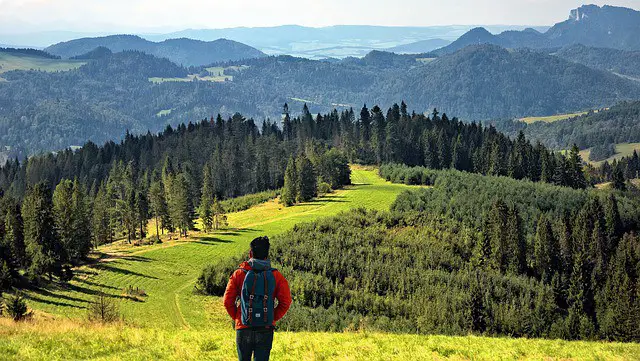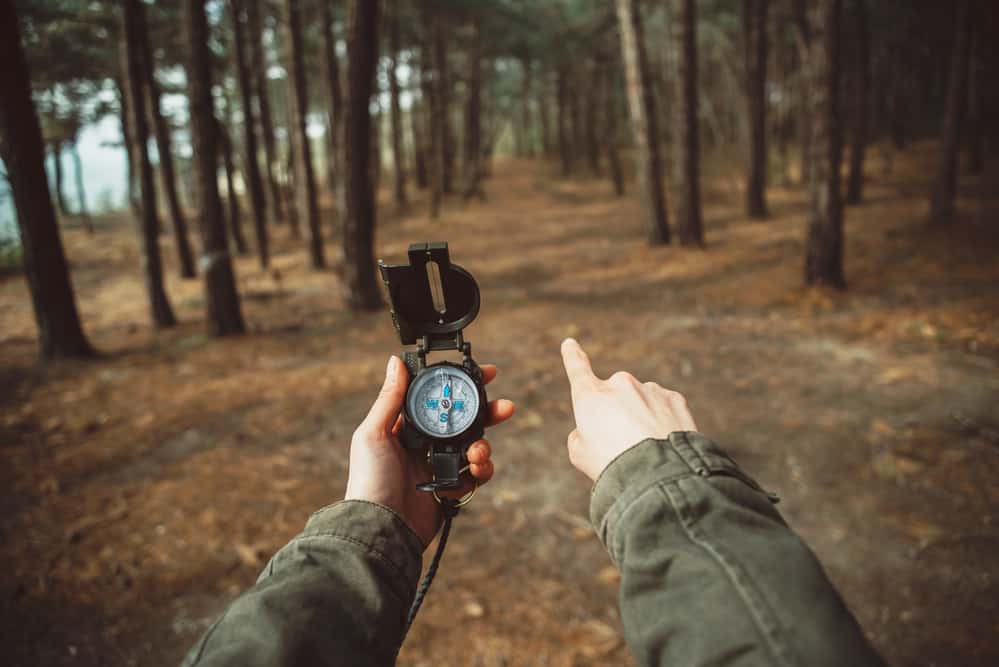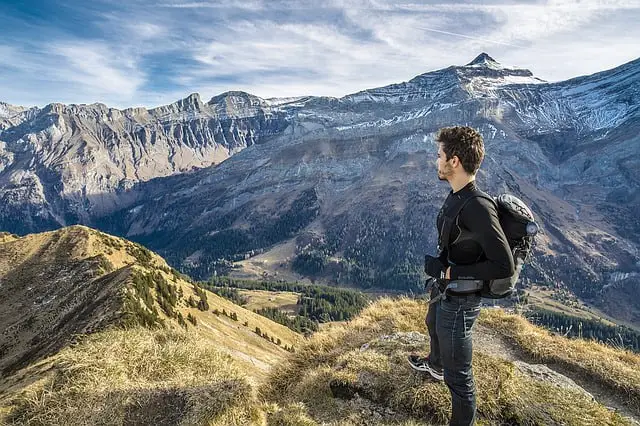Navigating The Outdoors Without Apps: A Beginner’s Guide
With the recent increase in smartphone technology, people are more capable than ever of spending time outdoors.
We have external chargers that can help recharge our phones, even when we are in the middle of a forest, and modern hiking apps help you navigate even the most complicated areas with ease.
But, unfortunately, even smartphones can fail us. And when that happens, we need to rely on more traditional skills of navigation.
So, to properly explore this, we are going to take a look at different aspects of navigating the outdoors without apps.
Let’s dive in.
What To Keep In Mind When Navigating The Outdoors Without Apps
Since smartphones are so available and useful, we tend to forget that old-school navigation is even an option.

It is amazing how easily experienced hikers can handle navigating the outdoors without apps
Keep in mind that outdoor navigation is something that we, as a species, have perfected over centuries.
So, even if you find yourself without the ability to use your phone, you should still be able to find your way with relative success. But, in order to do so, you need to know a couple of important tips.
For the sake of the article, we are going to assume that you will carry a map and a compass with you. You can, theoretically, navigate the outdoors without these tools.
But, to do so with any degree of success, you will need knowledge and skills that far outweigh what we can cover in a single text.
Properly set your map
To properly navigate the outdoors without apps, you first need to set your map. By this, we mean turning it so that it is in accordance with your compass.
There is usually a slight difference between the "north" that your map will show and the "north" on your compass.
This is due to the fact that the magnetic north that the compass shows is dependent on where you are in the world.
Using a compass
To get bearings on your compass, you need to first understand the basics of it. The main working part of it is the magnetic needle.

Its red end always points to the Earth's magnetic north pole. The outer rim of the compass is marked with lines for degrees and with N-S-E-W, which represent north, south, east, and west, respectively.
To align your maps north with your compass, you will have to take into account a slight degree of error.
This error is represented as a deviation on the Ordnance Survey maps. If you don't have those, a rough estimate should be to turn the compass rim two degrees clockwise.
Using The Distinct Features Of Nature
Once you align your compass with your map, you need to carefully observe the sights around you to properly figure out where you are.
Hills, forests, rivers, differences in elevation... All of them serve as clues to where you currently are and how you are moving.
Remember, when it comes to navigating the outdoors without apps, none of the tools you have can give you a completely accurate answer to where you are.
Instead, you need to piece together the information you have from them and figure out your position and your bearings.
Probably you’ve heard that you can find North by finding moss on trees and rocks. And it’s true. Moss grows on the least sunny parts of trees so trying to find it will give you a clue of which direction to take.
Another hint you can use are spider webs. Spiders tend to build their webs on southern sides of trees.
For a full list of tips on how to find direction by using just nature hints, check out this article.
Figure Out Your Pace
The average walking pace for a person is 3.1 miles (5 kilometers) per hour. While this can be useful for a rough estimate, you should try to calculate what your walking pace is.
To do this, you can pinpoint two clearly visible locations on your map and then measure how long it takes you to walk from one to the other.
This is especially important to figure out for long-distance hikes. Having a steady walking speed, and being aware of it, will make navigation a lot easier.
Keep in mind that it is surprisingly easy to lose your bearings or to even walk in circles. So, we advise you to check your position every hour.
Or, if you make more frequent breaks, every time you make one. The more you practice navigating the outdoors without the use of apps, the better you will be at it.
What To Do If You Get Lost
It is surprisingly easy to get lost in nature, even when you go on a local hike. So, if you do get lost, you shouldn't worry much.

You should always think of the safety measures when preparing to go on a hike.
Instead, you need to be aware of how you react and remember to always bring some extra supplies on your hikes.
Stay Calm And Open Your Senses
Staying calm is the best thing to do when you find yourself lost. More often than not, people panic and disorient themselves even more than necessary.
So, the first thing to do is to try to figure out where to go. You can do this by getting to a vantage point and trying to retrace your steps.
A good rule of thumb is to go downhill if you have that choice. Not only you’ll save energy but your chances to find civilization increase.
Observe the surrounding carefully, and when you start walking, mark your way with sticks or rocks.
If possible, climb on a tree or a high rock and try to pinpoint your direction by observing the area. Probably you’ll be able to see some trails or trail markers if you don’t spot anything more significant.
If you have a compass and a map, this will be easier to do, but it still requires some skills.
If you happen to find signs that people left such as traces of campsites, fireplaces, cigarette butts, etc, usually that means there might be a road or a trail nearby. Look carefully for human trails and try to spot a route.
In such cases, it’s also good to have binoculars with you. This handy tool is not only useful for birdwatching or enjoying gorgeous views at close sight.
It can help you distinguish people or signs of civilization from miles.
Calling For Help
If you are unable to figure out where to go, call for help. Preferably, before dusk. At these hikes you should always have a safety phone around that serves only for worst-case scenarios.
If worse has come to pass, and you've misplaced your navigation tools while relocating hiking gear and other sports equipment, stay put.
Light a camping fire so that people can see smoke from far away and give the rescue team time to find you.
Conclusion
While finding your way outdoors without apps may seem risky, it does give you a better sense of being connected to nature.
We rely far too often on our phones, which takes us away from getting all the benefits of hiking. If you do choose to navigate without using apps, you will force yourself to be much more attentive and mindful of where you are and where you are headed.
So, even though phones are quite useful, there is a certain part of the experience that we loose once we lean on them too much.
How do you best navigate your way in the outdoors? Leave a comment below.



